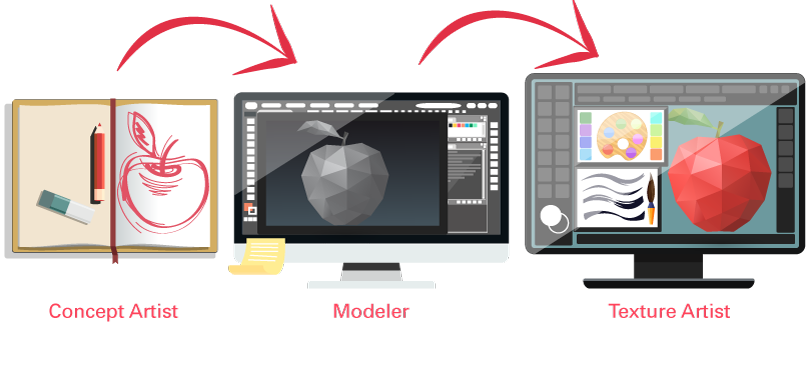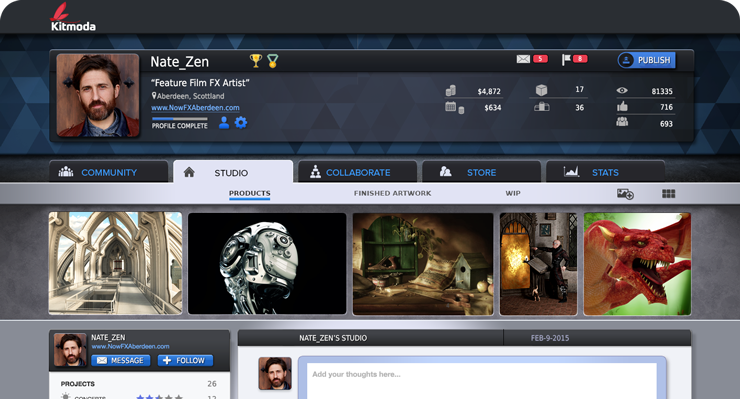Although the large videogame publishers seem to be only vaguely aware of it, it seems clear to me that the next logical evolution for many of those who today work in the 3D digital industry is to extend their 3D modeling abilities to object creation through 3D printing. While many 3D artists so far have walked down this path on their own, a new 3D model sharing platform called Kitmoda wants to bring all 3D artists and designers together within a single, accessible and secure platform targeted to bot professional and final users.

The Kitmoda patent pending publishing system has been built to be highly secure and fast, empowering artists to launch or join a collaboration projects. Kitmoda lets concept artists earn a share of sales commissions for 3D models of 80%. For this it does not require exclusivity agreements and, during the time of the Beta testing period, the artists who will make their models available on the system will receive 100% of sales revenues.
The idea is that modelers can use Kitmoda both to find inspiration or to find someone who will take care of aspects such as texturing to earn a commission. The team at Kitmoda also emphasizes that their system differs from other 3D model websites in that the artist retains full creative control on how models are rendered and presented. Furthermore, models are not “micromanaged” as the system only uses a basic form to gather information on each work and pass on to the buyer, with no generic rule set involved. Artists have access to a full social networking platform with a studio wall where they can share thoughts and updates.
Content on Kitmoda is categorized by different art styles, such as Gothic, Art Deco, Steampunk, Anime, Whimsical, or Celtic, a feature which is intended to allow art directors and model buyers to easily find the items that best fit their project’s specific needs and style. While it is clear that Kitmoda has been created with the CG industry in mind, it is interesting that the team behind it views 3D printing as a primary and direct revenue driver for 3D artists in the consumer segment. The diffusion of proper tools allowing 3D artists and 3D printing consumers to directly and efficiently interact could be very beneficial to both.



